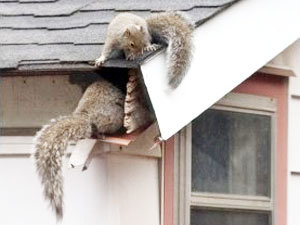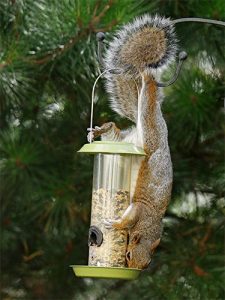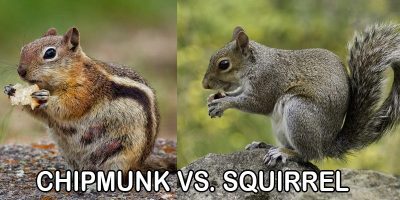Dealing with pesky squirrels in your yard or home? The right bait is crucial for successful trapping. This guide reviews the most effective squirrel baits of 2025, helping you choose the right option to humanely capture these destructive rodents before they damage your property or pose health risks. In addition to selecting the right bait, pairing it with the best squirrel traps for 2025 will enhance your chances of a successful catch. Consider factors such as trap size, ease of use, and humane design to ensure both effectiveness and ethical treatment of the animals. By combining the right bait and traps, you can effectively manage squirrel populations while protecting your home and garden. In addition to choosing the best bait, it’s equally important to consider preventative measures. This guide will also highlight the best squirrel repellents for 2025 to help keep these critters at bay. By combining effective trapping strategies with reliable repellents, you can create a comprehensive approach to protecting your home and garden.
Quick Picks: Best Squirrel Baits of 2025
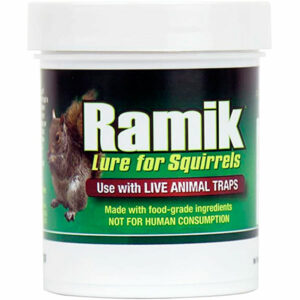
Editor’s Choice
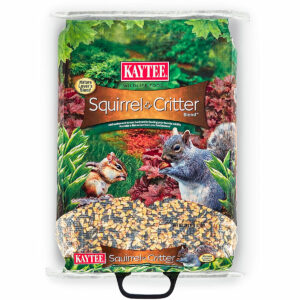
People’s Choice
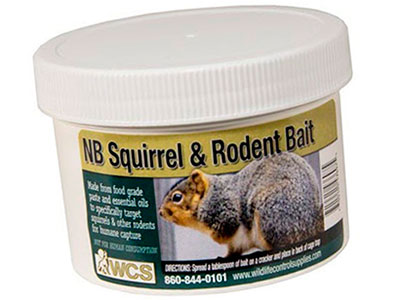
Best Non-Allergenic
Why Squirrel Control Is Important
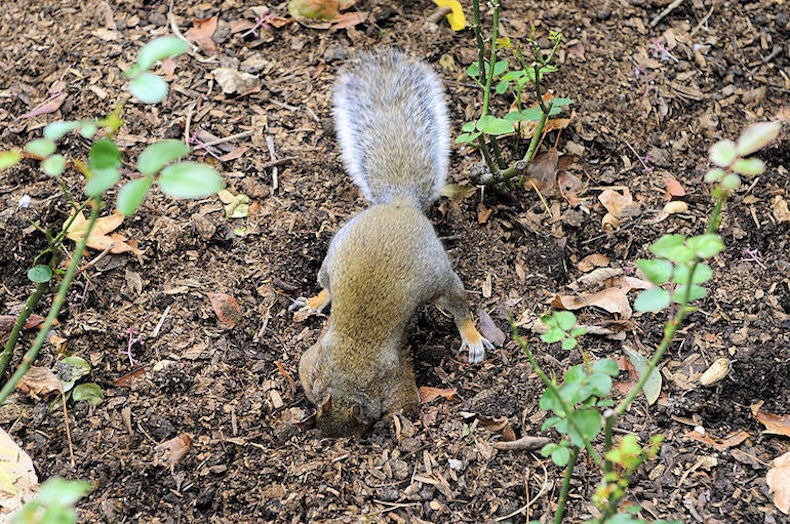
While squirrels might appear harmless at first glance, they can quickly become a significant problem for homeowners. Here’s why you should address a squirrel infestation promptly:
Property Damage
Squirrels chew on everything, including electrical wiring in your home, which can create fire hazards and expensive repairs.
Health Risks
Squirrels can carry several diseases including salmonellosis, tularemia, and even plague, putting your family and pets at risk.
Garden Destruction
They’ll dig up bulbs, eat fruits and vegetables, and damage trees and ornamental plants throughout your yard.
Effective trapping with the right bait is one of the most humane and successful methods for controlling squirrel populations. Live trapping allows you to capture and relocate squirrels without harming them, addressing the problem while being environmentally responsible.
This article focuses on non-lethal baits for live trapping squirrels. Once captured, you can safely relocate them or contact local wildlife services for assistance.
Top 3 Best Squirrel Baits Reviewed
After thorough testing and research, we’ve identified the three most effective squirrel baits on the market in 2025. Each offers unique advantages for different situations and preferences.
1. Ramik Lure for Squirrels – Best Overall Squirrel Bait
Ramik Lure for Squirrels
Editor's ChoiceHow Does It Work
How to Use
- Apply a small amount (approximately 1 tablespoon) directly to the trigger plate of your live trap
- For enhanced results, combine with a small piece of fresh apple or other fruit
- Store remaining product in the closed container in a cool, dry place
- Reapply if bait becomes wet or after several days of exposure
- Non-toxic formula safe for use around children and pets
- Highly attractive to squirrels
- Durable packaging keeps bait fresh
- No need for gloves when handling
- Works best when paired with fresh produce
- Slightly more expensive than some alternatives
Kaytee Squirrel and Critter Blend
People's ChoiceHow Does It Work
How to Use
- Place a small handful (about 2 tablespoons) in the back of your live trap
- For best results, position some of the mix leading into the trap as well
- Store unused product in its durable bag in a dry location
- Any leftover product can be used in bird feeders after trapping is complete
- Excellent value for the quantity provided
- Natural ingredients squirrels naturally seek
- Dual-purpose use (trap bait or wildlife feed)
- Durable packaging prevents moisture damage
- Loose mix can be messier to use than paste forms
- Contains peanuts (potential allergen concern)
3. WCS NB Squirrel Paste – Best Non-Allergenic Squirrel Bait
WCS NB Paste is the ideal solution for households with peanut allergies or for those who want a cleaner, more convenient bait option. This innovative formula provides the effectiveness of traditional nut-based baits without the allergy concerns.
How It Works
This paste bait was developed as an alternative to peanut butter (a traditionally effective squirrel bait) that addresses two key problems: allergies and drying out. The paste formula maintains its consistency and attractive properties much longer than peanut butter while eliminating allergy concerns.
The consistency is perfect for trap application – it can be applied to trigger plates or bait areas without the mess associated with loose baits or the drying issues of peanut butter.
For homes with peanut or tree nut allergies, this bait provides a safe alternative that doesn’t compromise on effectiveness. You can handle and use this bait without worrying about allergen contamination in your home.
- Peanut-free formula (suitable for homes with allergies)
- Doesn’t dry out like peanut butter
- No unpleasant odor
- Convenient screw-top container
- Clean and easy to apply
- Higher price point than other options
- May contain other potential allergens
Squirrel Bait Buyer’s Guide
Choosing the right squirrel bait for your specific situation requires understanding several important factors. This guide will help you make an informed decision based on your unique needs.
Effectiveness: What Makes a Good Squirrel Bait?
The primary function of any squirrel bait is to attract squirrels reliably. The most effective baits share several key characteristics:
- Strong Attractive Properties The bait should contain scents and flavors that squirrels find irresistible, even when they have other food sources available.
- Appropriate Consistency The bait should stay in place within the trap and not be easily removed without triggering the trap mechanism.
- Weather Resistance Quality baits maintain their effectiveness even when exposed to varying temperatures or humidity levels.
- Species-Specific Appeal The best baits target squirrels specifically and are less likely to attract non-target animals.
Bait Formulations: Different Types of Squirrel Baits
| Bait Type | Description | Best For |
|---|---|---|
| Paste Baits | Sticky consistency that adheres to trap surfaces | Indoor trapping, precise placement, long-lasting application |
| Granule/Seed Mixes | Combination of seeds, nuts, and grains | Outdoor trapping, situations requiring larger bait volume |
| Liquid Attractants | Concentrated scents that enhance other baits | Supplementing other baits, particularly wary squirrels |
| Natural Foods | Fresh fruits, nuts, or vegetables | Short-term trapping, particularly when combined with commercial baits |
Safety Considerations
When selecting squirrel bait, consider these important safety factors:
Child Safety
Choose non-toxic formulations if you have children in your home, as curious kids might come into contact with the bait or traps.
Pet Considerations
Select baits that won’t harm dogs or cats if accidentally ingested, especially if traps are placed where pets have access.
Allergy Awareness
Be mindful of nut allergies – many traditional squirrel baits contain peanuts or tree nuts that can cause severe allergic reactions.
All the baits reviewed in this article are non-toxic and designed for live trapping. If you choose to use poisonous baits (not recommended), be aware that they pose significant risks to non-target wildlife, pets, and even children.
Effective Squirrel Trapping Techniques
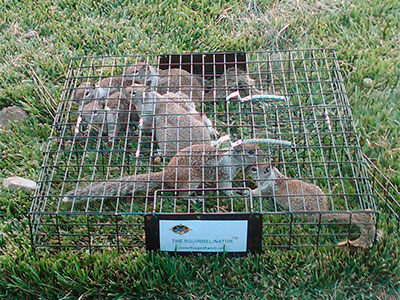
The right bait is just one component of successful squirrel trapping. These additional tips will help maximize your chances of success:
Trap Placement
Strategic trap placement dramatically increases your success rate:
- High-Activity Areas: Place traps where you’ve observed squirrel activity – near bird feeders, along fence lines, or near entry points to your home.
- Runways: Identify the paths squirrels regularly travel and position traps along these routes.
- Tree Bases: Squirrels frequently travel up and down trees, making the base an excellent trap location.
- Entry Points: If squirrels are entering your attic or garage, place traps directly adjacent to their entry points.
For particularly cautious squirrels, try “pre-baiting” – place bait in and around an unset trap for several days. Once squirrels become comfortable entering the trap for food, set the trap mechanism for a higher success rate.
Best Times for Trapping
Timing your trapping efforts can significantly impact success:
- Early Morning: Squirrels are most active in the early morning hours, making this an optimal time for trapping.
- Late Afternoon: A secondary period of activity occurs in the late afternoon before dusk.
- Seasonal Considerations: Fall is particularly effective as squirrels increase food gathering activity before winter.
Combining Baits for Better Results
For stubborn squirrel problems, consider these bait combinations:
Expert Bait Combinations
- Ramik Lure + fresh apple slices (enhanced scent attraction)
- Kaytee Blend + small amount of WCS Paste (combines texture and strong aromas)
- Any commercial bait + black oil sunflower seeds (irresistible to most squirrels)
After Successful Trapping: What Next?
Once you’ve successfully trapped a squirrel, it’s important to handle the situation properly:
Humane Relocation
If you plan to relocate the squirrel:
- Check local regulations – some areas restrict relocation of wildlife
- Release at least 5 miles from your property to prevent return
- Choose wooded areas with water sources and natural shelter
- Handle the trap carefully to minimize stress to the animal
Professional Assistance
Consider contacting professionals if:
- You’re uncomfortable handling trapped wildlife
- You have a large-scale infestation
- You’re unable to identify entry points to prevent future intrusions
- Local regulations restrict DIY wildlife management
After removing squirrels, take time to seal entry points, trim tree branches away from your roof, and reduce attractants like accessible bird feeders to prevent future infestations.
Frequently Asked Questions
What is the most effective bait for trapping squirrels?
Peanut butter is traditionally considered one of the most effective squirrel baits due to its strong aroma and sticky consistency. However, commercial options like Ramik Lure offer consistent results without the drawbacks of peanut butter (like drying out). For best results, commercial baits combined with fresh fruits like apple slices create an almost irresistible combination.
Is it legal to trap and relocate squirrels?
Legality varies by location. Many areas allow homeowners to trap nuisance squirrels on their property, but regulations regarding relocation differ. Some jurisdictions require euthanasia rather than relocation to prevent spreading diseases or creating problems elsewhere. Always check with your local wildlife agency before trapping.
How far away should I release trapped squirrels?
Wildlife experts recommend releasing squirrels at least 5 miles from your property. Squirrels have excellent homing abilities and can find their way back if released too close. Always release in suitable habitat with food sources, water, and natural shelter.
Can I use regular food as squirrel bait?
Yes, common foods like peanut butter, nuts, seeds, and fruits (especially apples) can effectively attract squirrels. However, commercial baits are formulated to withstand weather conditions better and often contain scent attractants that make them more effective than household options, particularly for wary squirrels.
How do I keep squirrels from returning after trapping?
Prevention requires addressing entry points and attractants. Seal all openings to your home (particularly roof/attic access), trim tree branches at least 8-10 feet from your roof, use squirrel-proof bird feeders, and remove easily accessible food sources. Consider installing chimney caps and roof vent covers as well.
Conclusion: Selecting the Best Squirrel Bait for Your Needs
After thorough testing and analysis, we’ve found that Ramik Lure for Squirrels offers the best overall performance for most situations. Its non-toxic formula, effectiveness, and ease of use make it our top recommendation for humane squirrel control.
For those seeking a budget-friendly option with consistent performance, Kaytee Squirrel and Critter Blend provides excellent value. Households with allergies will appreciate WCS NB Squirrel Paste for its peanut-free formula without sacrificing effectiveness.
Remember that successful squirrel management requires a comprehensive approach: effective baiting, proper trap placement, addressing entry points, and removing attractants from your property. With the right strategy and tools, you can effectively manage squirrel problems while maintaining a humane approach to wildlife control.
For persistent or large-scale squirrel problems, consider consulting with a professional wildlife control service. They can provide targeted solutions based on your specific situation and ensure compliance with local regulations.
